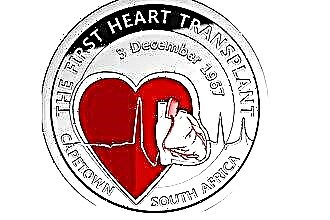Tricuspid insufficiency is a defect of the tricuspid valve of the heart, in which the leaflets between the right atrium and the ventricle do not close (close) to the end, causing regurgitation, i.e., reverse flow of blood.
Description
The main task of the tricuspid valve (TC) is to provide unilateral blood circulation in the right heart. Opening when the atria are compressed, it allows blood to flow into the right ventricle. By closing, the valve prevents blood from flowing into the atrium during the contraction of the ventricles.
What happens when the TC is insufficient? The valve flaps do not fully close, allowing blood to flow in the opposite direction. This is called regurgitation, which causes the right atrial cavity to fill with blood and expand. As a result, more blood flows from the right ventricle into the right ventricle (RV) than normal, which also leads to the expansion of the latter. To push through an excessive amount of blood, the ventricle has to work "non-stop", which is why its hypertrophy (thickening of the muscle layer) develops. The situation worsens over time: the pancreas can no longer work at the right pace and completely loses its strength.
A condition called right ventricular heart failure occurs. Blood begins to stagnate wherever it can, especially in the lower extremities, kidneys, spleen, liver.
Tricuspid valve insufficiency accounts for approximately 15-30% of all heart defects. I also want to note that the isolated variant of TC insufficiency is more an exception than a rule. It is very rare and most often goes hand in hand with mitral heart disease.
To an insignificant extent, tricuspid regurgitation can also be observed in healthy people.
In advanced forms, the outcome can be disability and the following complications:
- atrial fibrillation;
- thrombosis and pulmonary embolism;
- cardiogenic cirrhosis of the liver due to prolonged venous blood stasis.

Possible reasons for the appearance
There are many reasons for the development of tricuspid insufficiency. The most common of them are:
- Rheumatism - autoimmune inflammation, often involving valves. May occur 1-2 weeks after tonsillitis (tonsillitis) caused by a special beta-hemolytic streptococcus. This is the most common cause of not only MC failure, but also many other acquired heart defects in children.
- Infective endocarditis - Acute pathology of the inner lining of the heart, which is sometimes called the "disease of injection drug users" due to the high risk of infection during unclean injection. But it can also develop due to poor antiseptic treatment of the skin during an unprofessional procedure.
- Mitral valve (MK) defects - MV failure or stenosis of the mitral orifice often occurs as a consequence of the pathology of the tricuspid valve.
- Respiratory system diseases - chronic obstructive pulmonary disease, bronchial asthma.
- Congenital heart defects - Ebstein's anomaly.
- Cardiac diseases - cardiomyopathy, myocardiosclerosis.
- Increased pressure in the pulmonary artery.
More rare causes of TC insufficiency:
- Use of medications - some medications can have a destructive effect on the leaflets, for example the migraine remedy Metisergide or diet pills Fenfluramine.
- Exposure to ionizing radiation - radiation therapy for the treatment of malignant tumors.
- Hereditary diseases manifested by a defect in connective tissue - Ehlers-Danlos syndrome, Marfan syndrome, undifferentiated dysplasias.
- Carcinoid tumors. In neuroendocrine neoplasms located in the organs of the gastrointestinal tract, the tricuspid valve is often affected for unknown reasons.
- Rheumatic diseases - rheumatoid arthritis, systemic lupus erythematosus, systemic scleroderma, dermatomyositis.
- Whipple's disease - a very rare chronic intestinal infection that can be complicated by endocarditis.
Types of pathology
There are two types of TC insufficiency:
- Organic, which occurs as a result of morphological changes in the valve leaflets (wrinkling, fibrosis, degeneration) in rheumatism, endocarditis, connective tissue diseases, etc.
- Functional the form is found three times more often than organic. In her case, the structure of the valve is not disturbed. Failure occurs due to increased pressure in the right ventricle, which causes the expansion of the valvular fibrous cage and the leaflets cannot fully close. This type of tricuspid valve defect is observed in combination with mitral heart defects and other pathologies: with pulmonary hypertension, severe bronchial asthma (i.e., in conditions leading to overload and increased pressure in the pancreas).
Tricuspid Insufficiency Symptoms
The main clinical picture is drawn by the signs of chronic heart failure (CHF):
- difficulty breathing (shortness of breath), aggravated by physical exertion;
- rapid onset of fatigue;
- drowsiness;
- aching chest pains;
- tachycardia;
- swelling in the legs, especially in the evenings;
- heaviness or aching pain in the right side under the rib due to an enlarged liver;
- bluish coloration of the lips and tip of the nose;
- pulsation of dilated cervical veins.
In advanced stages, cardiac arrhythmias are common, such as atrial fibrillation. Patients begin to experience discomfort in the chest, high frequency and irregularity of the pulse, dizziness, feeling of lightheadedness, nausea. Due to the sharp drop in blood pressure, they may even faint.
Atrial fibrillation is one of the most unfavorable and dangerous complications of MC failure, since it quite often becomes the cause of ischemic strokes.
What is the difference between heart failure with a defect and a condition of another origin? Even with extremely pronounced phenomena of blood stagnation in the internal organs, people can feel quite healthy, not experience any unpleasant sensations, and, moreover, they can perfectly tolerate physical activity.
Degree of tricuspid valve insufficiency
For an objective assessment of the progress of the defect, the volume of regurgitation (reverse flow of blood) is taken into account according to the data in the table below.
The degree of regurgitation | Echo-KG sign | Symptoms |
1st degree tricuspid insufficiency | Minimal and barely noticeable blood flow without any hemodynamic disturbances | Can be seen in healthy people. There are absolutely no symptoms |
2nd degree tricuspid insufficiency | Regurgitation 2 cm from TC | Due to compensation of hemodynamic disorders, it may be accompanied by slight shortness of breath during intense physical work |
3rd degree tricuspid valve insufficiency | Regurgitation at a distance of more than 2 cm from the TC | Shortness of breath appears with habitual exertion, increased heart rate, slight heaviness in the legs and their swelling in the evenings |
Insufficiency of TC of the 4th degree | Regurgitation that occupies almost the entire cavity of the RA | A detailed picture of CHF: difficulty breathing, pain in the heart, edema, heaviness in the right side, etc. |
Diagnostics: ultrasound criteria and other methods
When examining a person with tricuspid insufficiency, I should pay attention to the following signs:
- increased and diffuse pulsation in the epigastric region, which occurs due to pronounced thickening and expansion of the right ventricle;
- an enlarged and throbbing liver;
- a very characteristic symptom of right ventricular CHF is hepatojugular reflux (when I press on the liver, the cervical veins begin to swell strongly);
- when listening to the heart, you can encounter a prolonged systolic murmur on the xiphoid process at the lower edge of the sternum (this cartilage is located in the epigastric region).
My main instrumental method for diagnosing tricuspid insufficiency is echocardiography (Echo-KG, ultrasound of the heart). Her main criteria for the final verdict:
- regurgitation of blood in the right atrium;
- the width of the regurgitant stream is more than 7 mm;
- the area of the orifice of regurgitation is more than 40 mm2;
- expansion of cavities and thickening of the muscular layer of the pancreas and rump;
- increased pulsation of the dilated inferior vena cava.

Also, one of the criteria for the presence of the disease is the reverse blood flow in the hepatic veins. On the ECG tape, I quite often find signs of overloading the right heart, namely:
- PP and RV hypertrophy: high pointed P wave in leads II, III, aVF (the so-called "P-pulmonale"), high R waves in leads I, II, deep S waves in leads V5, V6;
- incomplete right bundle branch block;
- atrial fibrillation (atrial fibrillation).
To better track rhythm disturbances, I conduct Holter (daily) ECG monitoring, since many arrhythmias are paroxysmal (paroxysmal) and may not be detected on a conventional cardiogram.
Treatment: methods and indications
The primary task of physicians is to eliminate the cause of valve failure.
Drug therapy has several directions:
- the fight against CHF and the maximum possible slowdown of its progress;
- prevention and treatment of cardiac arrhythmias;
- prevention of thrombosis.
I use the following medications to treat heart failure:
- beta-blockers - "Bisoprolol", "Metoprolol";
- ACE inhibitors - "Perindopril", "Lisinopril";
- aldosterone antagonists, or potassium-sparing diuretics - "Spironolactone".
For edema, I use more powerful diuretics - "Torasemide", "Indapamide". If too much fluid accumulates in the cavities (chest, abdominal) or pericardial sac, I consult with surgeons about pumping it out. Depending on the cavity from which the excess is removed, the following procedures are distinguished: pleural puncture, laparocentesis, pericardial puncture.
For the treatment of arrhythmias, antiarrhythmic drugs are prescribed - "Amiodarone", "Propafenone". To prevent thrombus formation and to avoid pulmonary embolism or stroke in patients with atrial fibrillation, I use anticoagulants - Warfarin, Dabigatran, Rivaroxaban.
Doctor's advice: when is it time to have surgery
Surgical intervention requires grade IV tricuspid insufficiency, as well as a combination of any stage with mitral defect. It is preferable to carry out the plastic of the valve, if it is impossible to perform it - prosthetics. After it, the patient is waiting for the prevention of endocarditis. This implies taking antibiotics as part of the course indicated by the doctor. If severe TC deficiency is found in a woman in a position, in certain cases the pregnancy must be terminated for medical reasons.



